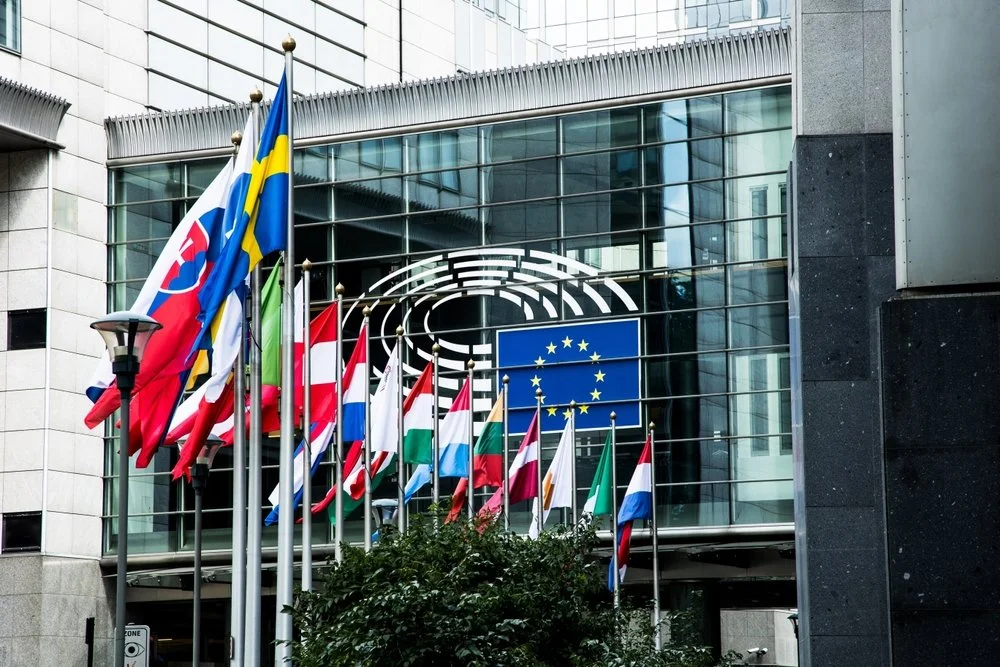Ready, Steady, Go: Advancing Urban Green Infrastructure in the EU
Advertisement
Introduction
Since December 1, 2024 a new European Commission has taken office. President Ursula von der Leyen and her designated Commissioners have presented their plans for the next five years, summarized in a set of mission letters and the "Europe’s Choice" document, outlining the political guidelines for the 2024–2029 term. With both the European Parliament (in office since mid-June) and the European Commission now settled, the European Union enters a period of political stability required to tackle urgent issues in an increasingly complex geopolitical and environmental context.
European Commission President Ursula Von der Leyen poses during a first meeting with European Commissioners designated in Brussels, Belgium on September 18, 2024.
Advancing the innovative urban green infrastructure agenda must now navigate this new institutional framework. Members of both the European Parliament and the European Commission have become more conservative, focusing on transitioning from the European Green Deal to a Clean Industrial Deal. Who will benefit from this shift, and at what cost to the environment is unknown? The next five years will reveal the answers.
Several European Commissioners will play pivotal roles in shaping policies relevant to green infrastructure. Jessika Roswall, the Swedish Commissioner for Environment, Water Resilience, and a Competitive Circular Economy, stands out as a key figure. Her portfolio is central to addressing urban green challenges. Danish Commissioner Dan Jørgensen (Energy and Housing) and Dutch Commissioner Wopke Hoekstra (Climate Action) will also significantly influence the agenda.
Two major policy files on the European Commission’s agenda provide clear opportunities to promote urban green infrastructure: the European Water Resilience Strategy and the European Climate Adaptation Plan. Both are scheduled for publication in 2025.
Water stress remains a critical issue in Europe. According to the European Environment Agency (EEA), around 20 percent of the EU’s territory and 30 percent of its population experience water stress annually, with urban areas being particularly vulnerable. Economic costs are estimated at €9 billion per year, a figure that could rise to €65 billion annually by the end of the century. These costs exclude ecological damages, underscoring the need for urgent action.
Advertisement
The European Water Resilience Strategy aims to ensure sustainable water management and address scarcity through circular solutions that mitigate acute water stress. Restoring the natural water cycle will likely form the cornerstone of this strategy. In urban contexts, this translates to integrating vegetation into built environments to enhance rainwater retention, detention, and infiltration using nature-based solutions (NBS). Measures like green roofs and permeable surfaces could play a crucial role in this strategy.
The upcoming European Climate Adaptation Plan offers another significant opportunity to advance the use of urban green infrastructure. As extreme weather events such as floods and heatwaves increase in frequency and intensity, urban areas face heightened risks. Recent floods in Valencia highlighted the need for improved risk preparedness and adaptation strategies. Policymakers must act decisively, leveraging urban green infrastructure for stormwater management and other resilience benefits.
Urban green rooftop garden with trees, bushes, shrubs in the city on the top of a modern office building next to the cars and the yellow tram
The European Environment Agency’s European Climate Risk Assessment emphasizes the urgency. Over the past three years, economic losses from climate-related events exceeded €50 billion annually. In 2022 alone, heatwaves caused an estimated 60,000–70,000 premature deaths in Europe. In a high-warming scenario, hundreds of thousands more could die from heatwaves annually, while coastal flood damages might surpass €1 trillion per year. Addressing these risks requires robust, science-based climate resilience measures, including integrating vegetation in urban areas to mitigate heat and manage water.
Two additional policy areas hold promise for advancing urban green infrastructure. First, embedding the nature-health nexus into policymaking could create cross-sectoral synergies, as highlighted in the mission letter of Executive Vice President Teresa Ribera. Second, designing financial incentives for nature-based solutions, mentioned in Commissioner Hoekstra’s mission letter, could accelerate deployment. These areas could elevate urban green infrastructure by emphasizing its contributions to public health, biodiversity, and climate resilience.
Brussels, Belgium - 04 08 2023: The European Parliament headquarters. Modern and contemporary architecture in a place where European and world cultures meet. Peace Flags flying euro statues.
Implementation will be a critical priority for the next European Commission. Over the past mandate, the EU made notable progress in integrating urban green and blue infrastructure into climate and energy policies under the European Green Deal. Key legislative advancements include: the Nature Restoration Law introducing a mandatory urban greening target to restore biodiversity and ecosystem functions; the Urban Wastewater Treatment Directive requiring integrated wastewater plans that incorporate green and blue infrastructure; and the Energy Performance of Buildings Directive mandating the consideration of green roofs in relation to solar rooftop installations.
Although Member States are primarily responsible for implementing these provisions, the European Commission must provide guidance and ensure timely, ambitious delivery. The briefing “Making Europe’s Built Environment Greener, Healthier and More Resilient” highlights these developments and offers recommendations for the next five years.
Despite the complex political landscape and efforts to deprioritize environmental policies, opportunities abound to promote urban green infrastructure. By leveraging its multiple benefits - spanning increasing biodiversity, water management, energy efficiency and public health - urban green infrastructure can remain central to EU policymaking. The next institutional term offers a chance to advance this agenda, ensuring that European cities innovate and become greener, more resilient, and better equipped to face future challenges.
Advertisement
Luigi Petito, 49, father of two, is an expert in European public affairs. He is based in Brussels, cross-roads for international affairs and the European Institutions. In 2019 he was invited to establish and lead the European (EU) Chapter of the World Green Infrastructure Network. Since then, he follows EU policy and regulatory developments related to green infrastructure and advocates for a systematic integration of green infrastructure in urban areas.







